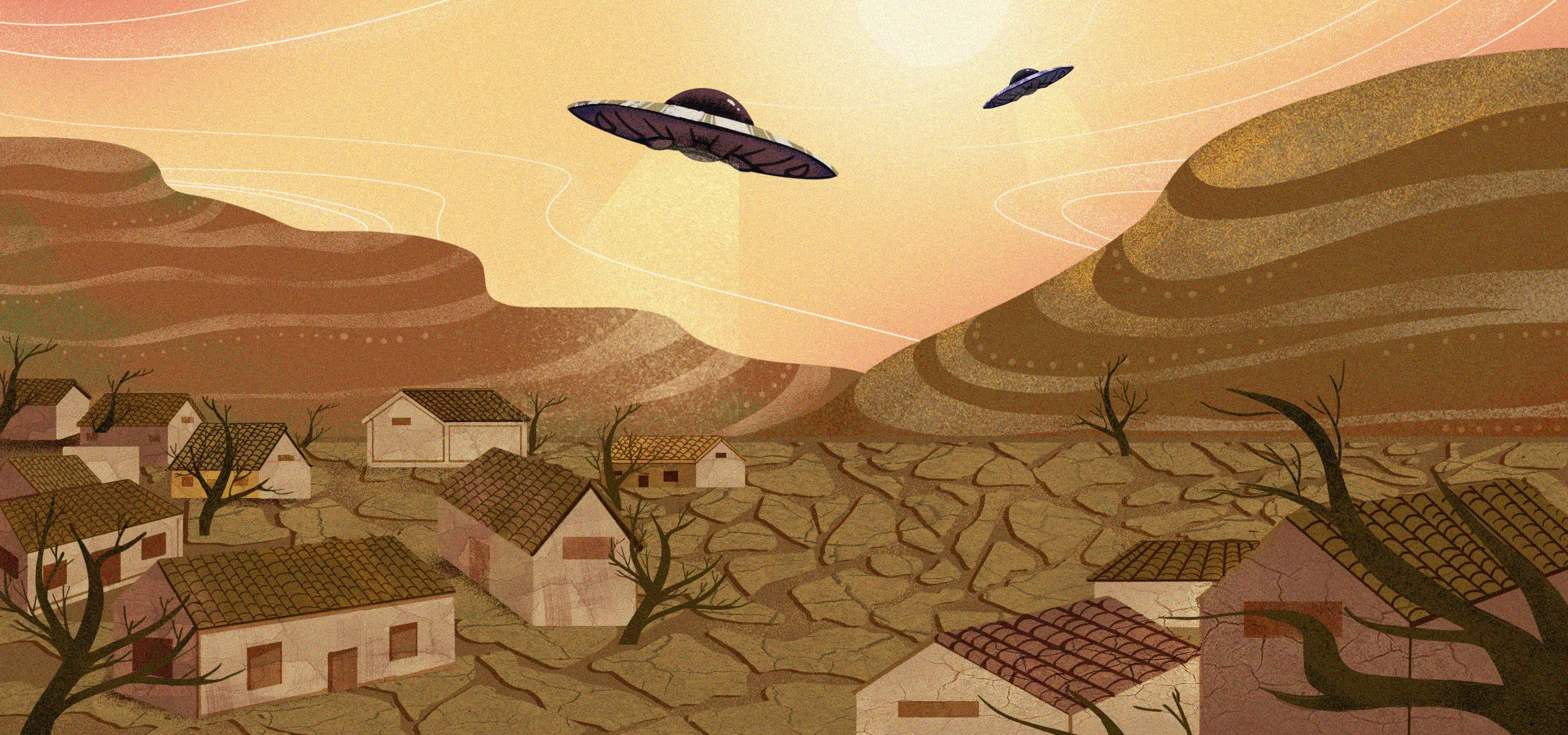Two villages allegedly disappeared overnight in the last century: Where did they go? Did they even exist?
Villages in China are ”vanishing”: According to national statistics, there were around 3.6 million incorporated villages in the country in 2000; but by 2010, only 2.7 million remained—250 villages vanished per day on average during that period, and the total further decreased to over 2.4 million in 2017.
Of course, these ”disappearances” are hardly mysterious: The culprit is China’s rapid rate of urbanization, which led to the urban population surpassing rural population for the first time in 2012 as young people migrated to look for better opportunities in the cities. But there could be two exceptions: one village in Fujian and one in Shaanxi, whose alleged overnight disappearance in the last century has enthusiasts of the supernatural speculating and debating even to this day.
Some Chinese bloggers have crowned the incidents as two of ”the world’s top four unsolved village disappearances,” putting them on par with an Inuit village in northwestern Canada which was allegedly found completely deserted, but with food still hanging over fire pits and needles in half sewn clothes; as well as the Roanoke Colony in Virginia, one of the earliest British settlements in North America, whose population vanished in late 16th century, later inspiring a whole season of the famed horror series American Horror Story in 2016.
But China’s vanished villages could just as well be historical myths, as TWOC discovered that most accounts of these mysteries trace back to a handful of online blogs that cite sketchy sources (or each other).
In the Qing dynasty (1616 – 1911) during the reign of either the Guangxu Emperor or his grandfather, the Daoguang Emperor (the exact time remains an open debate), more than 1,000 residents, mostly surnamed Xie and with a few surnamed Huang, lived a happy and self-sufficient life in the idyllic Shexia village, located in Jinjiang city, Fujian province, on the southeastern coast of China. But one night, allegedly, the whole village was simply wiped off the map.
Rumor has it that a giant sandstorm attacked the area that night, burying the village and erecting three mountains in its stead. Doubters of the story point out that there were no historical records of sandstorms in this city, and no such storm could have left great damage on one village while leaving all neighboring villages intact.
Discussions about the mystery online fail to provide any historical record supporting this incident—most articles on this topic, in fact, seem to be close variations of one same account, and provide no reliable sources. Yet the story still captured netizens’ imagination, with one blogger speculating that the villagers may have had time-traveled together—a theme often seen in online literature, TV series, and films in and out of China.
Today, a Shexia village indeed exists in Jinjiang city, which boasts a sand dune relic from the Bronze Age—the possible inspiration for some details of the legend.
The disappearance of the village in Shaanxi in 1987, however, has attracted more attention. There is even an entry on Baidu Baike, a Wikipedia-like online encyclopedia, listing the tale as “incident of Qinling Mountain village’s disappearance” and “Night Leopard Cat Incident.” As the general story goes, all the residents and livestock of an unnamed village at the foot of the Qinling Mountains disappeared overnight on October 12 that year.
One popular account states that they were taken away by aliens for experiment, as many residents around the Qinling Mountains supposedly spotted UFOs early that morning and saw swarms of snakes fleeing the mountains before that. Reliable information is, again, very sparse. There is no clue as to which village had vanished, who those supposed witnesses were, what the flying saucers looked like, and why it was dubbed the ”Night Leopard Cat Incident.” According to another theory, the villagers were transferred by the military overnight to make way for an operation, but how and where they were transferred was confidential, since the drill was a state secret.
Be it UFOs or military secret, the mystery seems hardly solvable. The Baike entry emphasizes that the incident was a rumor: It originated from a line on the profile of a user named Zhang Lixing on Tencent’s instant messaging platform QQ on October 2010, which simply says “a weird incident happened at the foot of the Qinling Mountains.” Supposedly, this line incited various interpretations and went viral on other social media platforms such as Weibo and Baidu Tieba in just two days.
Local authorities—such as the provincial police office, the military, and the municipal governments of neighboring Hanzhong, Ankang, Baoji, Xi’an, and Shangluo cities—all denied the account the day after it went viral, according to the Baike entry. Xianyang’s government supposedly clarified that the so-called UFOs were LED spotlights from a plaza, as reported by SCOL.com.cn, a news portal under state-affiliated Sichuan Daily. Yet even the original text of these official denials are as untraceable as the details of the mystery itself.
The Night Leopard Cat Incident continues to arouse curiosity online. In recent years, some accounts have evolved to claim that the reason behind the lack of reliable details is because information around the incident has been heavily censored, as befitting a ”top secret military operation.” Perhaps in this day and age, with the ubiquity of social media and apps tracking our every move, we all need to believe it’s still possible to just disappear.












